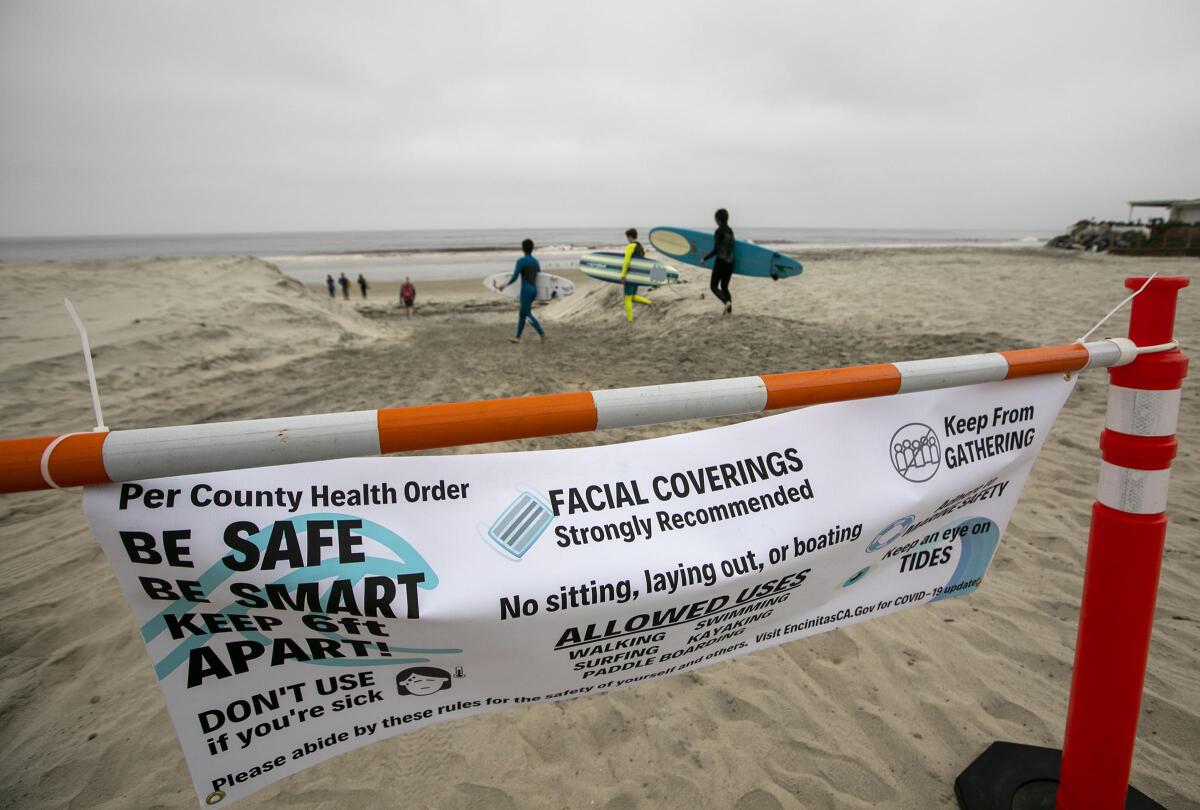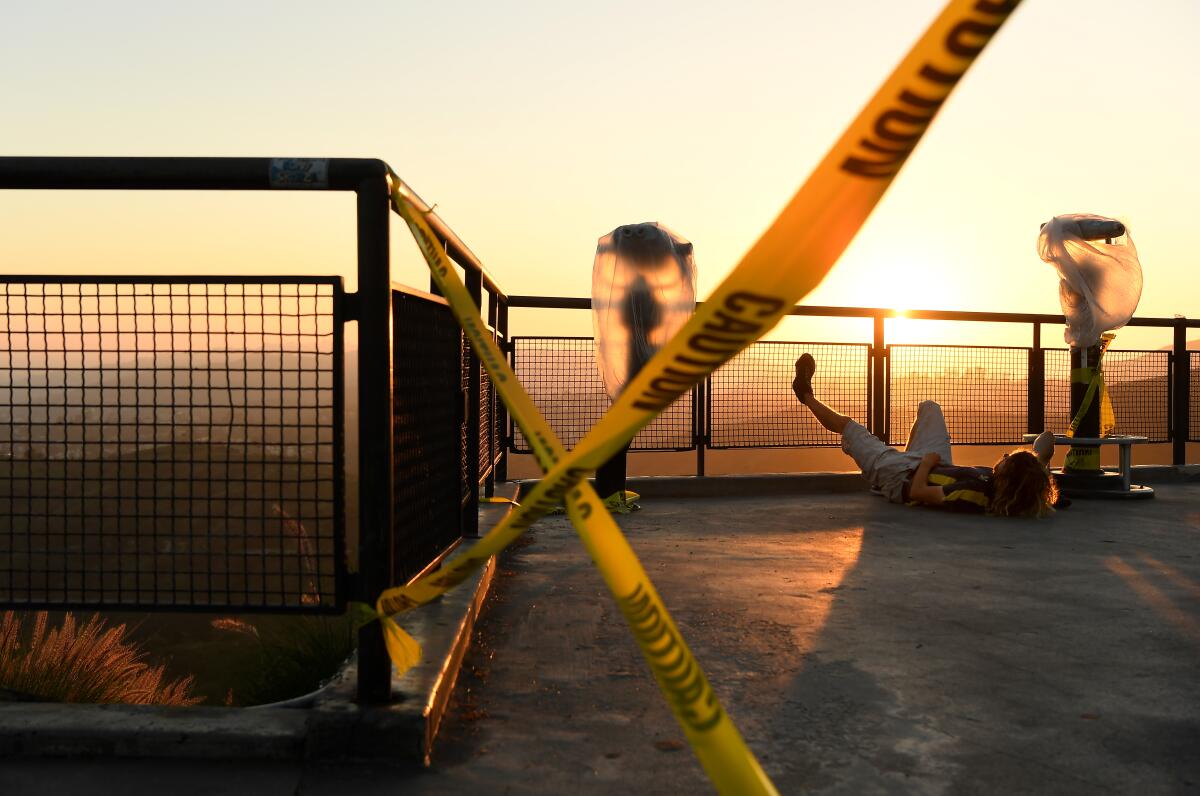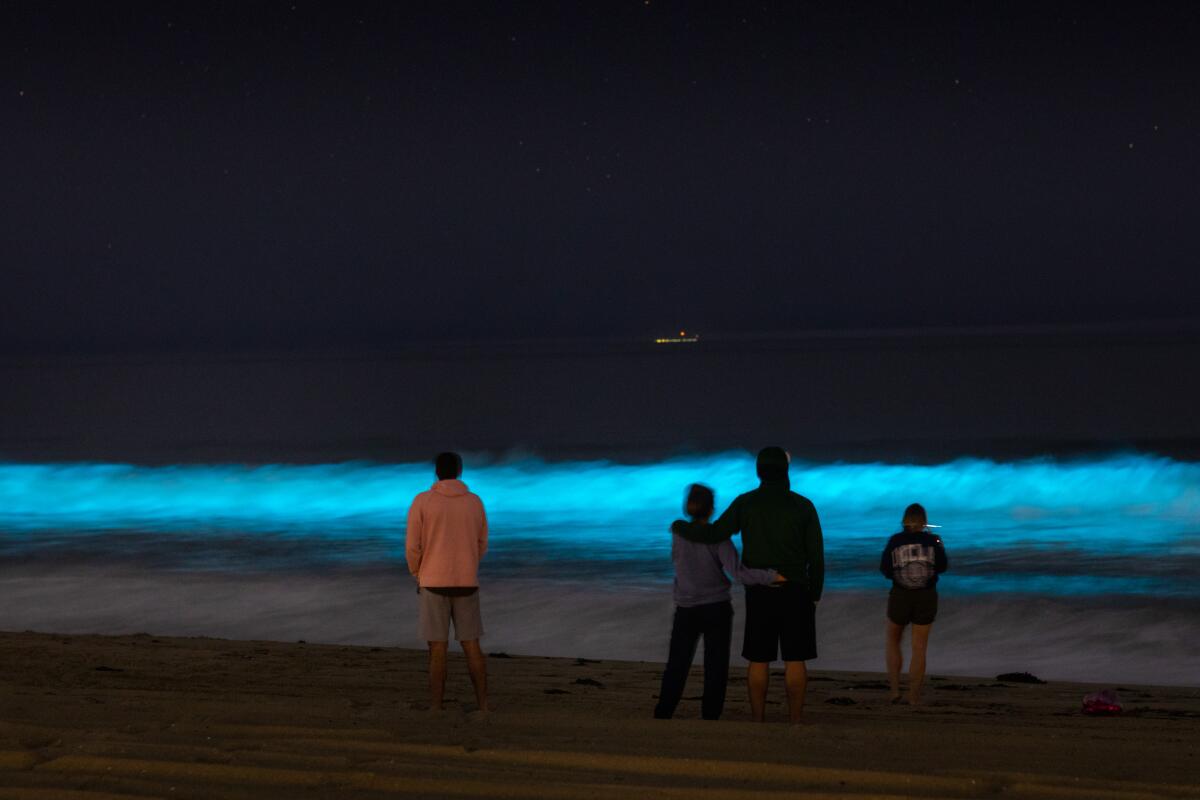Newsletter: The ABCs of reopening

Good morning, and welcome to the Essential California newsletter. Itâs Wednesday, April 29, and Iâm writing from Los Angeles.
Sign up for Essential California
The most important California stories and recommendations in your inbox every morning.
You may occasionally receive promotional content from the Los Angeles Times.
In the nearly six weeks since Gov. Gavin Newsom issued a statewide stay-at-home order, the governor has often compared the process of reopening California to the dimmer feature on a light fixture. There is no simple on/off switch for life returning to normal during an ongoing pandemic â especially not when nearly 40 million people in the worldâs fifth-largest economy are concerned. It will be a gradual process, even in a best-case scenario.
On Tuesday, Newsom laid out the clearest plan yet for reopening the nationâs most populous state. And Californians can expect Newsomâs new plan to operate a bit like that dimmer switch, slowly letting the light of normalcy back into our lives in a series of distinct phases.
[Read the story: âSome California businesses could reopen within weeks as state fights coronavirus, Newsom saysâ in the Los Angeles Times]
The four-phase plan also came with an announcement that may be music to the ears of some exhausted California parents: Kids could possibly be returning to classrooms as early as late July or early August, with the next academic year potentially starting in the summer to address learning losses brought on by coronavirus-forced school closures. Few details about the logistics necessary to reopen schools were offered during the briefing, but the governor did suggest that the second phase of his plan might include physically reopening some K-12 campuses to offer summer school programs or consider an earlier start to the new school year.
The plan itself â which provides a blueprint for slowly reopening the state while preventing new outbreaks that could lead to another shutdown â isnât structured around any guaranteed timetable. Instead, officials will use various benchmarks around testing, hospitalization and other factors to guide the stateâs forward momentum.
Phase one is where we currently are: operating under an unprecedented stay-at-home order that limits all but essential activities while the state focuses on safety and preparedness.
Phase two, which could start as soon as a few weeks from now, will see some lower-risk businesses begin to reopen with safety modifications. Lower-risk businesses and workplaces, such as retail (possibly with curbside pickup) and nonessential manufacturing, will reopen during this phase. But things will probably look quite different from before, with strict distancing guidelines and physical modifications to enable that distancing. Newsom said his office is meeting with economic recovery teams to determine what the guidelines should look like for each sector to ensure the safety of workers and consumers. Limits on access to public space, likely including some parks and trails, will also loosen during this phase.
As mentioned above, the second phase might include a plan for allowing some K-12 schools to either offer summer programs or consider an earlier start to the new academic year. More child care facilities will also be able to resume operations.
Phase three â which officials have categorized as being months, not weeks, away â will allow higher-risk workplaces to reopen. That higher-risk category includes businesses that by definition necessitate close interpersonal contact, such as hair and nail salons, as well as gyms, movie theaters and in-person religious services.
Phase four is when things fully go back to ânormal,â if anyone even remembers what that looks like. Think tens of thousands of people at a concert, conventions and crowded sports arenas. Newsom reiterated that a true return to âthe way things wereâ wonât come until Californians have access to a vaccine, or we reach herd immunity.
[Read the full story: âThis is Californiaâs reopening plan for stores, offices, schools, sports, concerts, theatersâ in the Los Angeles Times]
What else you should know:
The âfour phasesâ are not to be confused with the âsix indicators,â but the two phrases are connected. The stateâs six indicators for modifying the stay-at-home order â which include the ability to test and monitor new infections, and the health systemâs capacity to handle potential surges â will help guide decision-making about moving through the four phases.
Newsom also made a point of recognizing the regionality of the state during Tuesdayâs briefing, saying that the points of local health departments must be considered. Think of the state order as the baseline for what all Californians must follow, with localities able to layer their own more stringent guidelines on top of it. Cities and counties will not, however, be allowed to opt for less-restrictive guidelines, at least for the time being.
And one last thing: If weâve learned anything over the last six weeks, itâs that nothing is written in stone. Not our best-laid plans for what we thought our lives would be like in April 2020. And certainly not this four-phase plan, which is a road map that could be altered based on any number of factors as the virus progresses.
âPolitics will not drive our decision making. Protest wonât drive our decision making. Political pressure will not drive our decision making,â Newsom said. âThe science, the data, public health will drive our decision making.â
And now, hereâs whatâs happening across California:
L.A. STORIES
Smaller crews. Stars dressing themselves. And lots of hand sanitizer. Hollywood is trying to figure out what reopening film sets might look like. Los Angeles Times
L.A. turned to Silicon Valley for a streamlined coronavirus test. It brings potential risks and rewards. Los Angeles Times
L.A.âs coronavirus clean air streak has already come to an end. Dramatic reductions in vehicle and industrial emissions contributed to lower smog levels, air quality experts say, but much of the improvement was also because of stormy spring weather. Los Angeles Times

Plus: The L.A. Times is starting a newsletter exploring climate change, energy and the environment. Sign up for Boiling Point for the latest on everything from water wars to wildfires to ways to live more sustainably. It begins May 7.
POLITICS AND GOVERNMENT
Confused about how to apply for benefits as a self-employed Californian? This Q&A should help answer your questions. LAist
CRIME AND COURTS
The University of California and California State University systems are being sued by students demanding refunds of some campus fees since the pandemic closed schools and forced learning to move online. Los Angeles Times
Support our journalism
HEALTH AND THE ENVIRONMENT
What coronavirus antibody studies can tell us. And more important, what they canât. ProPublica
Glowing blue waves lighting up the Southern California coastline rolled into the South Bay: The sporadic phenomenon â sometimes called sea sparkle â is something scientists have been studying for 120 years. Itâs associated with a red tide, or an algae bloom, made up of organisms called dinoflagellates. Los Angeles Times

Whatâs a place to do when half its population is in the crosshairs of coronavirus? The Coachella Valley may be best known for music festivals, tennis tournaments and championship golf, but itâs also home to some of the densest concentrations of senior citizens in California â the very same people with the greatest risk of contracting the coronavirus simply because of the year they were born. Los Angeles Times
CALIFORNIA CULTURE
California air travel plunged after the coronavirus. But by how much? Los Angeles Times
Lysol partnerships, no buffets and visible cleanings: Hereâs what your first post-pandemic hotel stay might look like. Los Angeles Times
NOT EVERYTHING IS TERRIBLE
You can now pay to have a goat join your Zoom meeting. âLaunched only a month ago, demand for this special service is already through the roof â from animal rights clubs to birthday parties to Fortune 100 companies, everyone wants to join in on the fun.â Sonoma Magazine
The coronavirus might have postponed the releases of the 2020 summer movie slate, but summer movie season remains a state of mind. With theaters closed, film critic Justin Chang is launching a 16-week showdown through the past to crown the ultimate summer movie since âJaws.â Polls each week will take place on his Twitter account, and Chang will host live video chats discussing the winner. Los Angeles Times
Two years ago, this 20-year-old competed on âThe Voice.â Now sheâs the star of a coronavirus block party in Upland. Los Angeles Times
A poem to start your Wednesday: âNothing Twiceâ by Wislawa Szymborska. Poets.org
Free online games
Get our free daily crossword puzzle, sudoku, word search and arcade games in our new game center at latimes.com/games.
CALIFORNIA ALMANAC
Los Angeles: partly sunny, 84. San Diego: partly sunny, 75. San Francisco: cloudy, 64. San Jose: cloudy, 71. Fresno: partly sunny, 93. Sacramento: cloudy, 82. More weather is here.
AND FINALLY
Todayâs California memory comes from Betsy Toll:
Growing up in Laurel Canyon in the 1950s was magical. Despite the House Un-American Activities Committee harassing many friends and neighbors (including my dad, who worked in radio and TV), for us kids, life on Green Valley Road was pretty idyllic. Lots of birds in the trees, and deer and coyotes meandered in the hills on rough little trails where we loved taking hikes and building forts. Community theater, caroms and ballet lessons at Wonderland Avenue School kept us busy in summertime, and once or twice, we pulled out inner tubes to have fun in a surprise winter snowfall.
If you have a memory or story about the Golden State, share it with us. (Please keep your story to 100 words.)
Please let us know what we can do to make this newsletter more useful to you. Send comments, complaints, ideas and unrelated book recommendations to Julia Wick. Follow her on Twitter @Sherlyholmes.
Sign up for Essential California
The most important California stories and recommendations in your inbox every morning.
You may occasionally receive promotional content from the Los Angeles Times.




